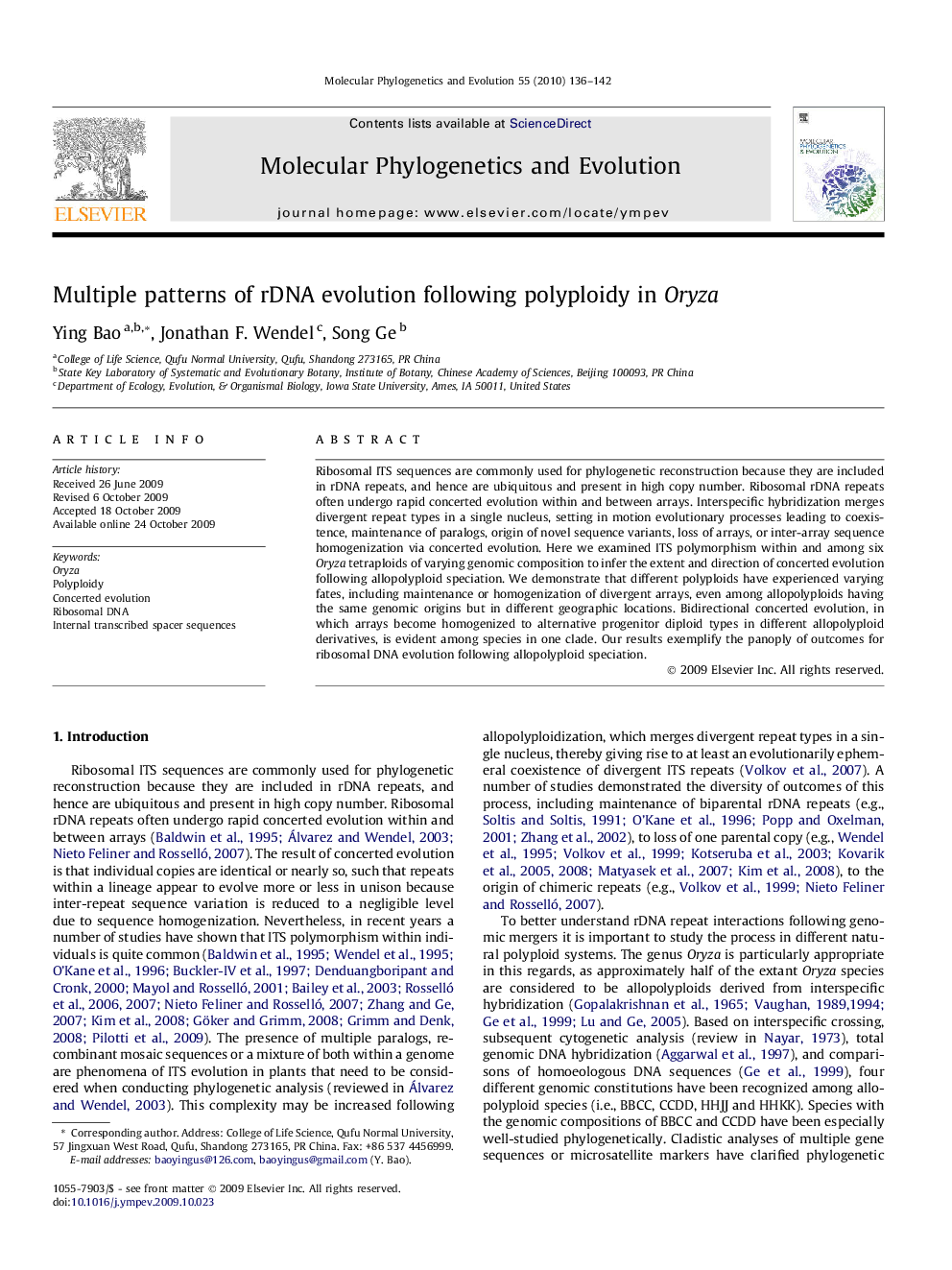| Article ID | Journal | Published Year | Pages | File Type |
|---|---|---|---|---|
| 2834836 | Molecular Phylogenetics and Evolution | 2010 | 7 Pages |
Ribosomal ITS sequences are commonly used for phylogenetic reconstruction because they are included in rDNA repeats, and hence are ubiquitous and present in high copy number. Ribosomal rDNA repeats often undergo rapid concerted evolution within and between arrays. Interspecific hybridization merges divergent repeat types in a single nucleus, setting in motion evolutionary processes leading to coexistence, maintenance of paralogs, origin of novel sequence variants, loss of arrays, or inter-array sequence homogenization via concerted evolution. Here we examined ITS polymorphism within and among six Oryza tetraploids of varying genomic composition to infer the extent and direction of concerted evolution following allopolyploid speciation. We demonstrate that different polyploids have experienced varying fates, including maintenance or homogenization of divergent arrays, even among allopolyploids having the same genomic origins but in different geographic locations. Bidirectional concerted evolution, in which arrays become homogenized to alternative progenitor diploid types in different allopolyploid derivatives, is evident among species in one clade. Our results exemplify the panoply of outcomes for ribosomal DNA evolution following allopolyploid speciation.
